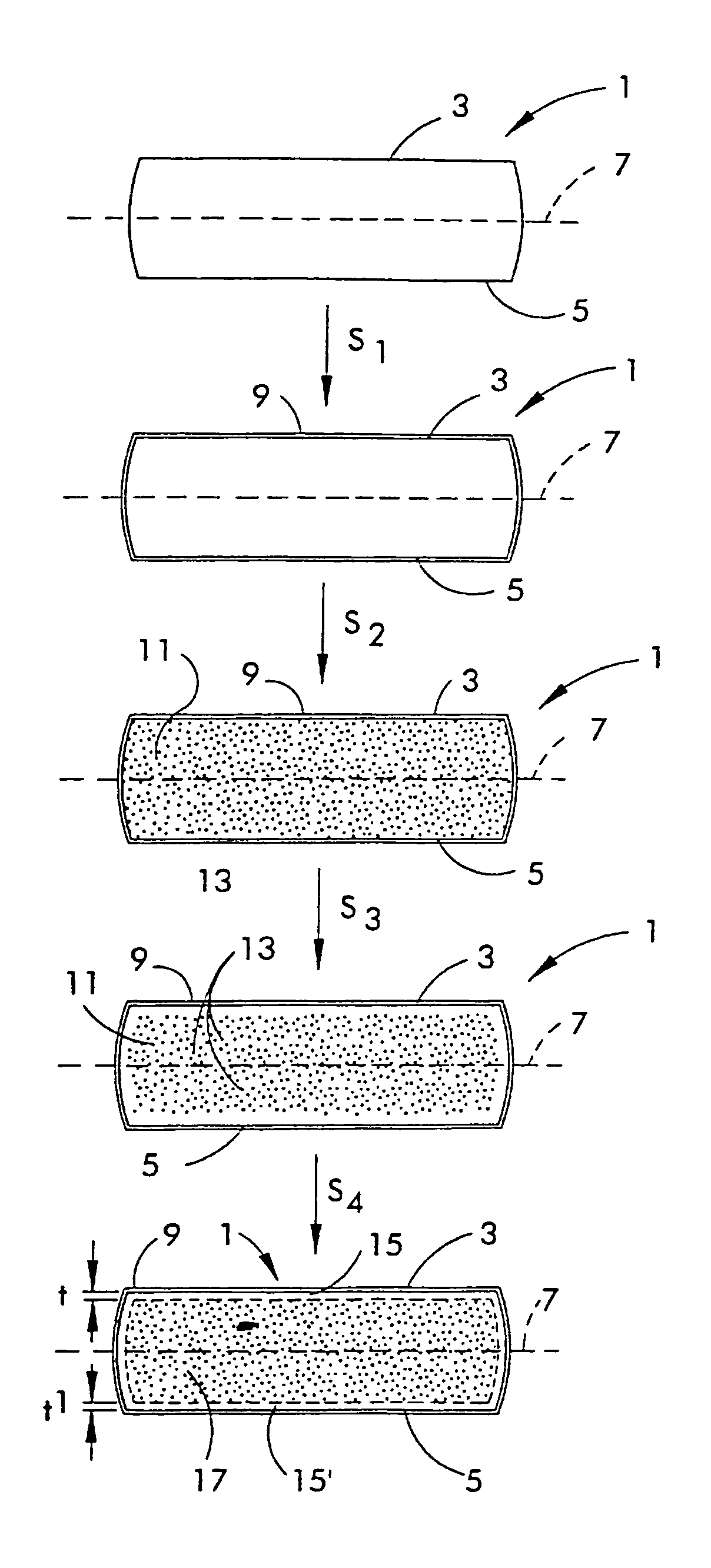Process for making silicon wafers with stabilized oxygen precipitate nucleation centers
a technology of precipitate nucleation center and stabilized oxygen, which is applied in the field of silicon wafers and process for the treatment of silicon wafers, can solve the problems of affecting the operation of the device, contaminated with various impurities, and precipitates can be harmful or beneficial
- Summary
- Abstract
- Description
- Claims
- Application Information
AI Technical Summary
Benefits of technology
Problems solved by technology
Method used
Image
Examples
second embodiment
[0033]In another embodiment of the process of the present invention, the wafer 1 is heat-treated in an oxygen-containing atmosphere in step S1 to grow a superficial oxide layer 9 which envelopes wafer 1 prior to step S2. In general, the oxide layer will have a thickness which is greater than the native oxide layer which forms upon silicon (about 15 Å). In this second embodiment, the thickness of the oxide layer is typically at least about 20 Å. In some instances, the wafer will have an oxide layer that is at least about 25 or 30 Å thick. Experimental evidence obtained to-date, however, suggests that oxide layers having a thickness greater than about 30 Å, while not interfering with the desired effect, provide little or no additional benefit.
[0034]After forming the oxide layer, the rapid thermal annealing step is typically carried out in the presence of a nitriding atmosphere, that is, an atmosphere containing nitrogen gas (N2) or a nitrogen-containing compound gas such as ammonia wh...
fourth embodiment
[0041]In a fourth embodiment, therefore, the atmosphere during the rapid thermal annealing typically contains an oxygen partial pressure sufficient to obtain a denuded zone depth of less than about 30 microns. Typically the denuded zone depth ranges from greater than about 5 microns to less than about 30 microns, and can range from about 10 microns to about 25 microns, or from about 15 microns to about 20 microns. More specifically, the thermal treatment may be carried out in an atmosphere comprising a nitrogen-containing gas (e.g., N2), a non-oxygen, non-nitrogen containing gas (e.g., argon, helium, etc.), or a mixture thereof, and an oxygen-containing gas (e.g., O2 or pyrogenic steam), the atmosphere having an oxygen partial pressure sufficient to create an inward flux of interstitials (e.g., at least about 1 ppma, 5 ppma, 10 ppma or more) but less than about 500 ppma, preferably less than about 400 ppma, 300 ppma, 200 ppma, 150 ppma or even 100 ppma, and in some embodiments prefe...
PUM
| Property | Measurement | Unit |
|---|---|---|
| temperature | aaaaa | aaaaa |
| temperature | aaaaa | aaaaa |
| temperature | aaaaa | aaaaa |
Abstract
Description
Claims
Application Information
 Login to View More
Login to View More - R&D
- Intellectual Property
- Life Sciences
- Materials
- Tech Scout
- Unparalleled Data Quality
- Higher Quality Content
- 60% Fewer Hallucinations
Browse by: Latest US Patents, China's latest patents, Technical Efficacy Thesaurus, Application Domain, Technology Topic, Popular Technical Reports.
© 2025 PatSnap. All rights reserved.Legal|Privacy policy|Modern Slavery Act Transparency Statement|Sitemap|About US| Contact US: help@patsnap.com


